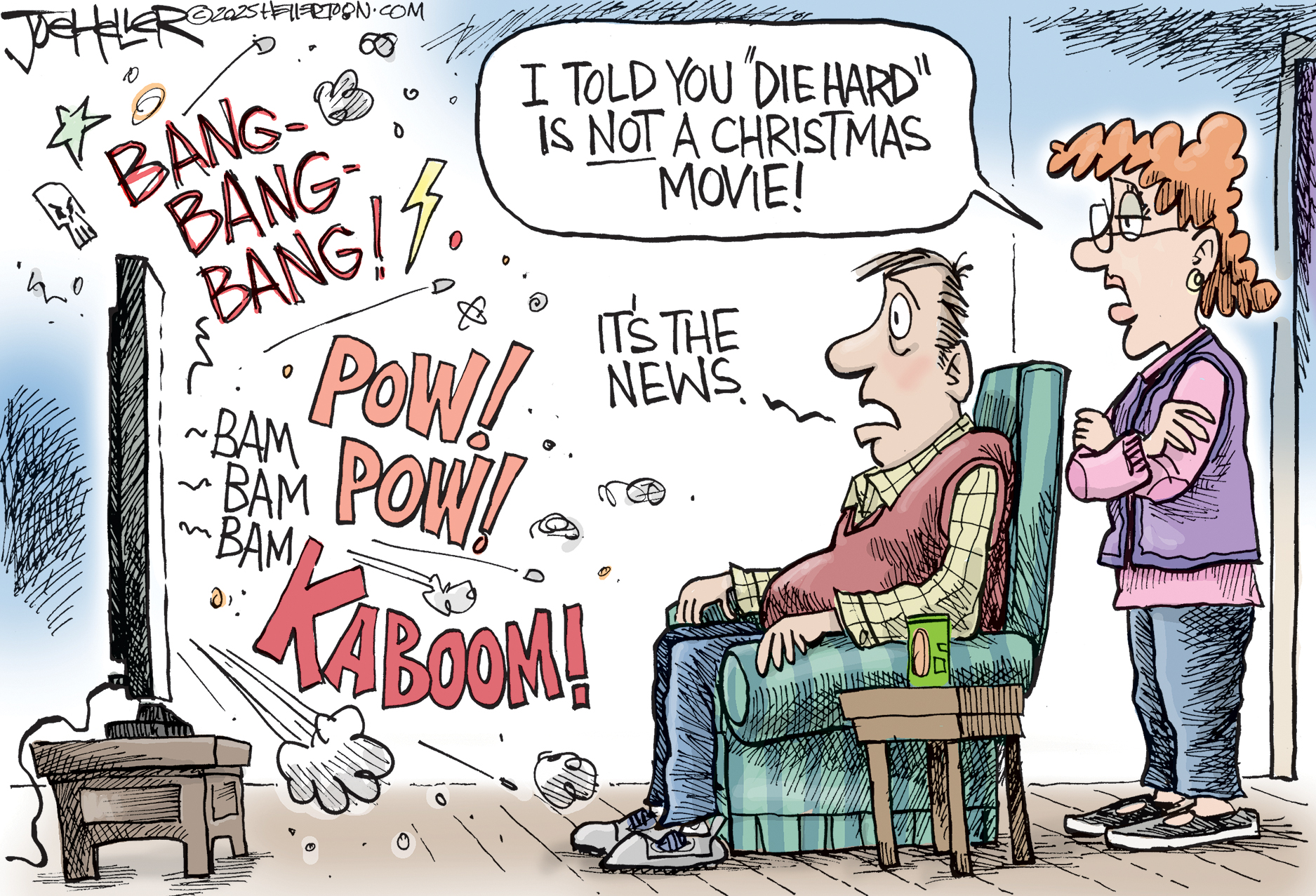Review of reviews: Art
Color Chart: Reinventing Color From 1950 to Today
Color Chart: Reinventing Color From 1950 to Today
Museum of Modern Art, New York
Through May 12
The Week
Escape your echo chamber. Get the facts behind the news, plus analysis from multiple perspectives.

Sign up for The Week's Free Newsletters
From our morning news briefing to a weekly Good News Newsletter, get the best of The Week delivered directly to your inbox.
From our morning news briefing to a weekly Good News Newsletter, get the best of The Week delivered directly to your inbox.
You don’t often encounter an exhibition “so simple and right” as Color Chart, said Daniel Kunitz in The New York Sun. This bold new show at the Modern brings together works by 44 artists from over the course of nine decades. All are based on the commercial color chart: that grid of color gradients used to sell everything from paint chips to nail polish. The exhibit begins with Marcel Duchamp’s painting Tu M (1918), a narrow canvas that portrays “a hand pointing to a sheet of paper, which floats above small rows of color samples.” In 1951, Ellsworth Kelly pieced together his Colors for a Large Wall from 64 single-color, square-foot paintings. From there, the theme spread rapidly into works by Andy Warhol, Frank Stella, and John Chamberlain. “Despite the programmatic nature of many of the works on view, a smattering of quirky, lighthearted pieces” stand out. Sol LeWitt turns a Crayola 12-pack into “an unexpectedly beautiful abstraction,” while Cory Arcangel and Bas Jan Adler create video art in primary hues.
According to the show’s curators, artists used out-of-the-can color “to cure art of its romantic tendencies by embracing a machine-made look,” said Ariella Budick in Newsday. But in fact the best works here are “loaded with personal significance.” Consider Jim Dine’s arrays of colored squares, which “look a little like sets of chips picked up from the local paint shop.” Far from being formal experiments, they’re sentimental references to a youth spent working in his family’s hardware store. Similarly, “the exhibit’s linchpin,” Robert Rauschenberg’s Rebus, employs store-bought paint and comic strips. The use of commercial artifacts hardly makes these finished works seem anonymous. “Instead, they add up to a cross section
of Rauschenberg’s unconscious.”
A free daily email with the biggest news stories of the day – and the best features from TheWeek.com
-
 Critics’ choice: The year’s top 10 movies
Critics’ choice: The year’s top 10 moviesFeature ‘One Battle After Another’ and ‘It Was Just an Accident’ stand out
-
 The small Caribbean island courting crypto billions
The small Caribbean island courting crypto billionsUnder the Radar Crypto mogul Olivier Janssens plans to create a libertarian utopia on Nevis
-
 Political cartoons for December 21
Political cartoons for December 21Cartoons Sunday’s political cartoons include Christmas movies, AI sermons, and more
-
If/Then
feature Tony-winning Idina Menzel “looks and sounds sensational” in a role tailored to her talents.
-
Rocky
feature It’s a wonder that this Rocky ever reaches the top of the steps.
-
Love and Information
feature Leave it to Caryl Churchill to create a play that “so ingeniously mirrors our age of the splintered attention span.”
-
The Bridges of Madison County
feature Jason Robert Brown’s “richly melodic” score is “one of Broadway’s best in the last decade.”
-
Outside Mullingar
feature John Patrick Shanley’s “charmer of a play” isn’t for cynics.
-
The Night Alive
feature Conor McPherson “has a singular gift for making the ordinary glow with an extra dimension.”
-
No Man’s Land
feature The futility of all conversation has been, paradoxically, the subject of “some of the best dialogue ever written.”
-
The Commons of Pensacola
feature Stage and screen actress Amanda Peet's playwriting debut is a “witty and affecting” domestic drama.